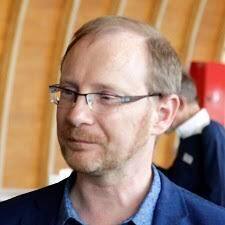Gilles Ryckebusch
Director of the Nord-Pas-de-Calais region of Voies navigables de France (VNF) and Manager of the Seine-Scheldt EEIG
Is the Seine-Scheldt an ecological network ?
Without a doubt! Firstly, because it will help to combat global warming. It will accelerate the modal shift from road to waterway, increasing the volume of goods transported via the large-gauge river network. This mode of transport contributes to decarbonisation by emitting five times less greenhouse gases than trucks per tonne transported. Secondly, because Seine-Escaut is a means of strengthening sustainable water management, a resource at the heart of major societal issues. Finally, because the network has been set up from the start with respect for the environment. We ensure the ecological performance of the river infrastructures that we create and renovate. All the work we undertake is carried out with the utmost respect for local flora and fauna, and is accompanied by measures designed to offset its impact on biodiversity, such as replanting programmes.
Do you have an example that illustrates this constant attention to the environment ?
The reopening of the Condé-Pommerœul canal to navigation, carried out as part of the Seine-Escaut project, seems to me to be a good example: 15% of the funds invested in the operation were devoted to safeguarding biodiversity and creating 30 hectares of wetlands on former sediment deposit sites. An anecdote in passing: in 2021, we were informed of the presence of beavers on this site. This has led us to integrate specific facilities into the project, such as feeding areas, which will make the presence of beavers permanent. They will thus cohabit with the river convoys: quite a symbol…
Frank Serpentier
Project manager for the Seine-Scheldt investments at De Vlaamse Waterweg nv (DVW) and Member of the Seine-Scheldt EEIG
What will be the economic benefits of the Seine-Scheldt ?
Once the network is in service, companies will have at their disposal an efficient, competitive and sustainable waterway transport service for their supplies and deliveries, which will serve an extensive area. This will be a real catalyst for growth. And this is true regardless of their size or sector of activity. Of course, this primarily concerns companies that traditionally use waterways, such as those in the construction and public works and chemical industries, and emerging companies based on waterways, for example in the circular economy and urban logistics sectors. But beyond that, the arrival of Seine-Scheldt is good news for all the economic players faced with road congestion in northern Europe. I would add that the network is not only of interest to companies: by developing exchanges and activity, it will have positive economic spin-offs for all the territories crossed. In particular, it will encourage the establishment of port, logistics and industrial facilities along the waterway.
Are you preparing the arrival of the network with the economic players ?
Of course, because we want them to be able to take full advantage of the potential offered by the Seine-Scheldt. In 2022, for example, we signed a partnership agreement in Flanders with economic and institutional players for the creation of the eNES platform (Economisch Netwerk Seine-Schelde – Seine-Scheldt Economic Network). It will help us to promote inland navigation and make the network more visible, the challenge being to optimise its use.
Jérôme Dezobry
Chairman of the Management Board of Société du Canal Seine-Nord Europe (SCSNE) and Member of the Seine-Scheldt EEIG
What role does consultation play in the deployment of Seine-Escaut ?
A central place, because one of the characteristics of this deployment is that it is both federative and partnership-based. The setting up of the network involves a multitude of players on an international, national, regional and local scale, in a logic of co-construction. We therefore regularly exchange with interlocutors as diverse as European institutions, local authorities, maritime and river ports, companies from all sectors of activity, farmers, recognised experts and environmental associations…. This is also what has made this project so rich and interesting since it was launched.
Can you illustrate this consultation process with an example ?
For three years, despite the health crisis, the construction of the Canal Seine-Nord Europe, the essential Seine-Scheldt section, has given rise to the equivalent of one consultation meeting per working day. These meetings enable us to provide information on the progress of the project, to dialogue with the stakeholders, to collect their opinions and suggestions, and to respond to their expectations and concerns. For example, we go out to meet the residents of the future canal using a mobile device, organise site visits for elected officials, and invite citizens to take part in workshops on the landscaping along the canal. We are also mobilising the economic fabric and skills of the regions in a Grand Chantier approach that anticipates and accompanies the construction of the Canal to optimise its economic and social benefits.
Pascal Moens
Director of Transport and Freight Intermodality at the Service public de Wallonie (SPW) and Member of the Seine-Scheldt EEIG
How far along are you in setting up the network in 2023 ?
For two or three years, the network has been taking shape in all the regions crossed. Construction sites are being completed, the first concrete achievements are appearing, and new services are being offered. These developments are positive for river navigation. They also help to enhance the local heritage and improve the quality of life of the inhabitants. It is exciting, especially since Seine-Scheldt is a long-term project, born of reflections that began in the early 2000s. We have been announcing its arrival for many years and now it is coming !
Can you give an example of how the network is taking shape in Wallonia ?
One of the most emblematic examples is the metamorphosis of the Scheldt crossing in Tournai. At this point, the waterway was too narrow to allow very large gauge river convoys to pass safely. It was widened in two stages. First, the old bridge was replaced by a new one. During this process, four kilometres of quays were redeveloped and a boat stop was created. Then the arches of the Pont des Trous, one of the most prestigious vestiges of medieval architecture in Belgium, were deconstructed and rebuilt in a wider version. We ensured that the building retained its original appearance, in particular by reusing as many of the original stones as possible. During this second operation, the banks around the Pont des Trous were also redeveloped, the aim being to make them welcoming places for strollers and soft traffic.




